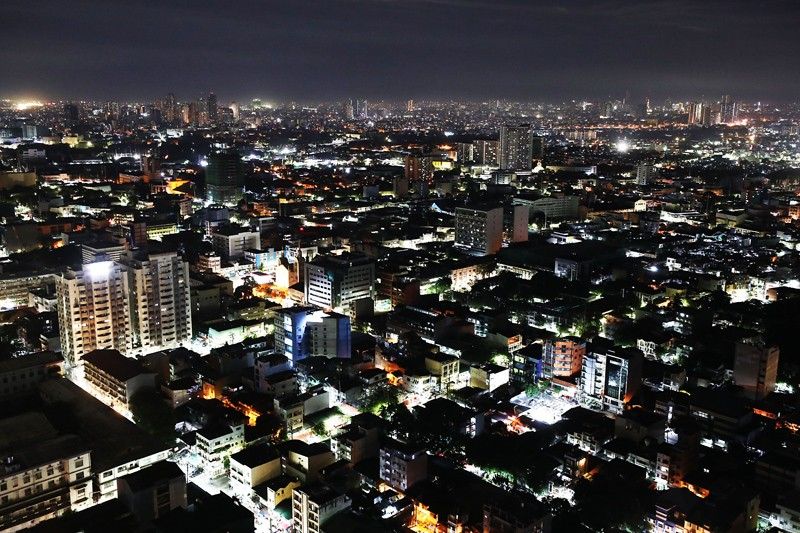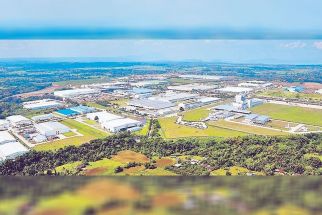GDP shrinks at slower pace

‘Economy on the mend’
MANILA, Philippines — The Philippine economy shrank at a less severe pace in the third quarter, coming off a record nosedive in the second quarter, following the easing of mobility restrictions and reopening of more businesses.
Economic output, as measured by gross domestic product (GDP), declined by 11.5 percent year-on-year in the third quarter, bringing the year-to-date contraction to an average of 10 percent, the Philippine Statistics Authority (PSA) reported yesterday.
Acting Socioeconomic Planning Secretary Karl Chua said the double-digit decline in the third quarter was “not surprising” given the reimposition of more stringent quarantine measures in the National Capital Region, its neighboring provinces, and in Cebu City, which together accounted for about 60 percent of the economy.
“The economic team is optimistic that the worst is over for the country. The smaller GDP contraction of 11.5 percent in the third quarter from a contraction of 16.9 percent in the second quarter indicates that the economy is on the mend. The path is clearer to a strong bounce-back in 2021,” Chua said.
“The third quarter of 2020 saw the country dance with the virus: two steps forward and one step back,” said a joint statement by the country’s economic managers, noting that while the quarantine measures dealt a major blow to the economy, it showed that the economy is strong enough to recover as the government now deals with managing risks to allow more businesses to safely open.
Among the major sectors, only the agriculture sector turned in a positive performance, growing anew by 1.2 percent in the third quarter. The industry sector, on the other hand, suffered a steep decline of 17.2 percent, while a contraction of 10.6 percent was seen in the services sector.
With the double-digit fall in the third quarter, the government’s full-year forecast of a more manageable 5.5 percent contraction would not be met since the economy would have to register a 6.6 percent growth in the fourth quarter.
“At this point, that is no longer feasible,” said PSA chief Dennis Mapa.
Because of the downward revision in the second quarter and the still steep decline in the third quarter, the
inter-agency Development Budget Coordination Committee (DBCC) would have to recast its macroeconomic assumptions and fiscal program.
“Given the latest data, the DBCC will have to reassess the entire macro fiscal framework,” said Chua.
Also to be factored into the reassessment are the effects of the recent typhoons that entered the country.
Chua said, however, that improvements may continue to be seen in the fourth quarter despite the recent onslaught of strong typhoons as the government implements a new policy of non-reversal to more stringent quarantine measures.
A series of typhoons entered the country in the middle of the fourth quarter and together, these weather disturbances caused damage valued at P38.8 billion, equivalent to 0.21 percent of the country’s estimated P18 trillion GDP.
Based on preliminary estimates, this can knock off only 0.055 percentage point from GDP growth in the last quarter of the year.
“I think this is a manageable level. What is important is we fast-track the recovery, so that more people will be reintegrated back after the disaster phase,” Chua said.
In October, the Cabinet approved policies that would open more of the economy. The trade department, for instance, issued guidelines that allowed more sectors to expand capacity to between 75 percent and 100 percent.
Moving into the last quarter of the year, the prevailing policy will be to use lockdowns only as a last resort and to increase the capacity of public transportation.
“Now, coming to the fourth quarter, one of the policies approved by the Cabinet is that we will no longer have a reversal or more stringent quarantine as our response to possible surges in cases, instead, we will pursue a strategy wherein we will impose or enhance the implementation of the minimum health standard,” Chua said.
“And if needed as a last resort, resort to the localized lockdown. So all of this suggests that the trajectory is better in the fourth quarter compared to the first two quarters, despite the contraction that we saw in those two quarters.”
Chua said policy changes meant to reopen more of the economy would support the return to a positive growth trajectory by next year.
“From the second quarter we are seeing major development from almost 17 percent contraction to much lower double-digit contraction in the third quarter. I think the trend is further improvement in Q4 and we will see positive year-on-year quarter growths early next year,” he said.
Nine months into the pandemic, the government is banking on the reopening of more sections of the economy, infrastructure buildup and structural reform to usher in recovery rather than the use of an aggressive fiscal response.
Pending in Congress are several bills meant to revive the sputtering economy. These are the 2021 General Appropriations Act (GAA), the Corporate Recovery and Tax Incentives for Enterprises (CREATE) Act, the Government Financial Institutions Unified Initiative to Distressed Enterprises for Economic Recovery (GUIDE) Act and the Financial Institutions Strategic Transfer (FIST) Act.
These proposed measures cover the lowering of corporate income tax, helping banks dispose of non-performing loans and assets, and provision of equity support to companies facing insolvency.
“I believe we have enough time to pass the budget and the three other bills I mentioned. There is significant experience from the past when we pass crucial reforms, even at the last minute, Congress and Senate were able to deliver so we will be hopeful for that,” said Chua.
The government’s infrastructure program can also be expected to regain momentum as mobility restrictions are loosened.
Some of the projects suffered delays because of right-of-way issues, non-dispatch of experts because of travel restrictions, and weather disturbances in some regions.
“But we believe that in the fourth quarter we will resume many of the construction and even accelerate in 2021,” Chua said.
Out of the 104 flagship projects, all except 26 are already in the pre-construction or construction phase.
- Latest
- Trending




























